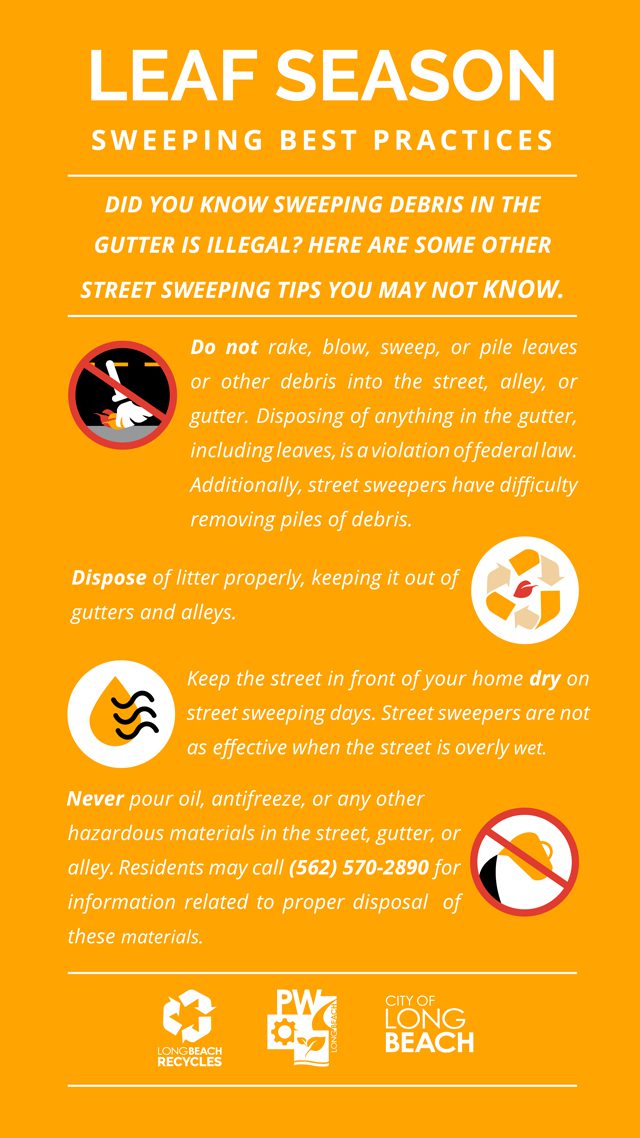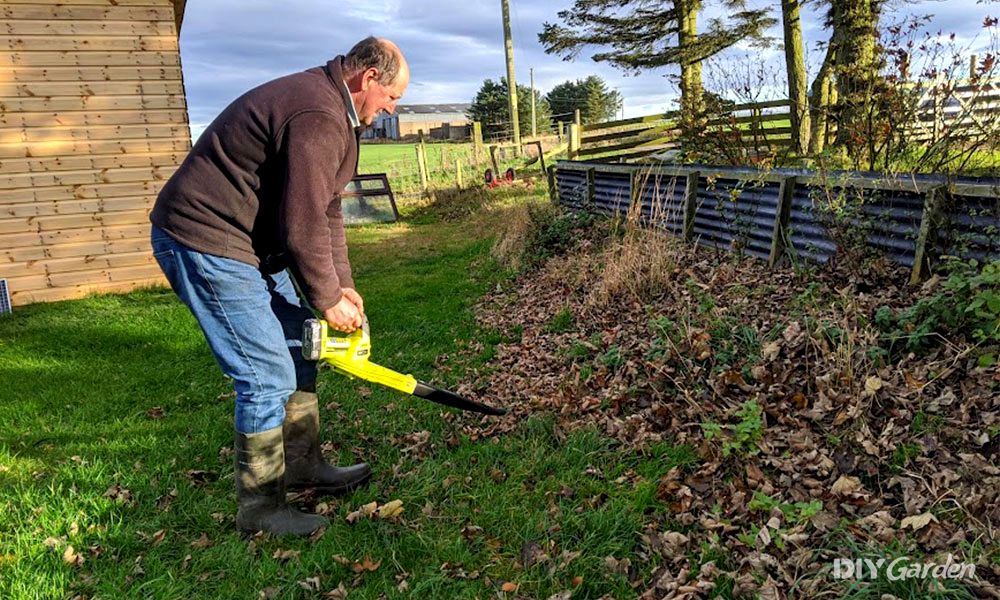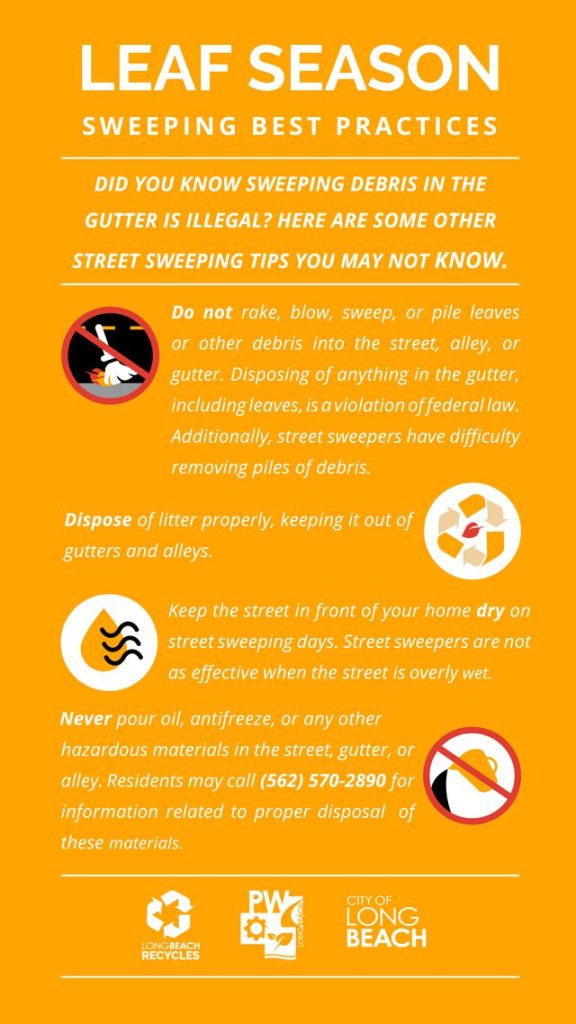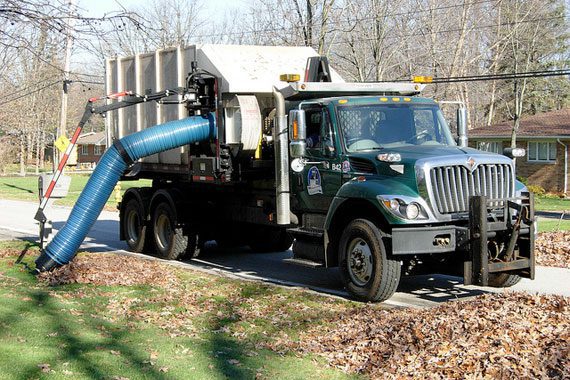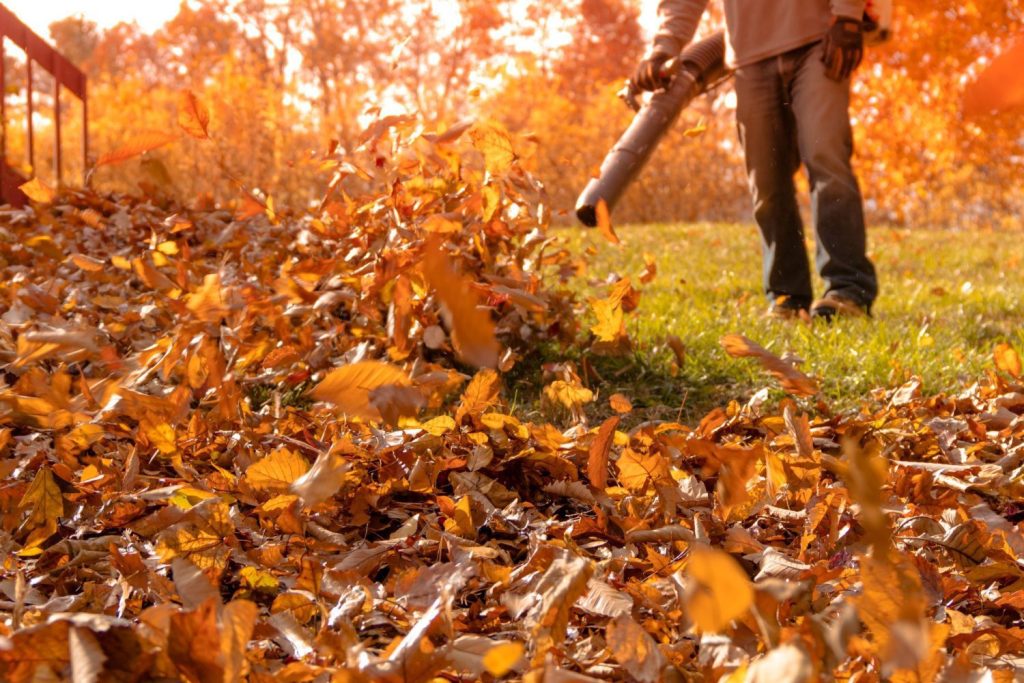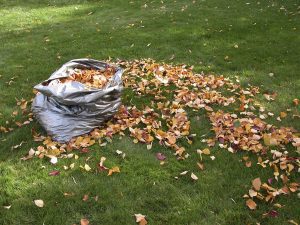When it comes to the aftermath of a successful leaf-blowing session, the question of how to properly dispose of leaf debris may arise. As autumn sweeps in and the vibrant foliage gracefully adorns our surroundings, it becomes necessary to address this seasonal dilemma. Fortunately, there are various efficient and environmentally-friendly methods at our disposal that can help us bid farewell to those wayward leaves, clearing the path for a tidy and pristine outdoor space.
This image is property of cdn.diygarden.co.uk.
Why Proper Disposal of Leaf Debris is Important
As responsible homeowners, we understand the importance of proper disposal of leaf debris. It not only helps maintain the cleanliness and aesthetics of our outdoor spaces but also has a positive impact on the environment. When we dispose of leaf debris in a sustainable manner, we can contribute to the health of our soil, plants, and overall ecosystem. This article will explore various environmentally friendly options for leaf debris disposal and provide step-by-step guides and tips for each method.
Composting as an Environmentally Friendly Option
Benefits of Composting
Composting is a fantastic option for disposing of leaf debris in an environmentally friendly way. By composting our leaf debris, we can transform it into nutrient-rich compost that enhances soil fertility and promotes plant growth. Composting also helps reduce the amount of waste sent to landfills, which in turn reduces methane emissions, a potent greenhouse gas.
Steps to Compost Leaf Debris
Composting leaf debris is a simple process that anyone can do. First, gather the leaves and shred them to speed up decomposition. Next, create a compost pile in a designated area of your yard or use a compost bin. Layer the shredded leaves with other compostable materials such as kitchen scraps, grass clippings, or garden waste. Make sure to turn the compost regularly to aerate it and speed up the decomposition process. After a few months, you will have nutrient-rich compost ready to use in your garden.
Tips for Successful Composting
To ensure successful composting, remember to balance the carbon and nitrogen content in your compost pile. The easiest way to achieve this balance is to add an equal amount of green (nitrogen-rich) and brown (carbon-rich) materials. Green materials include grass clippings and vegetable scraps, while brown materials include dried leaves, straw, and wood chips. Additionally, keep your compost pile moist but not soggy, as adequate moisture is crucial for decomposition. Finally, avoid adding diseased or pest-infested leaves to your compost pile to prevent the spread of diseases in your garden.
Using Leaf Debris for Mulching
Benefits of Mulching with Leaf Debris
Mulching with leaf debris is not only a sustainable way to dispose of fallen leaves but also offers numerous benefits for our gardens. When we use leaf debris as mulch, it acts as a natural weed suppressant, reduces evaporation and soil erosion, and helps regulate soil temperature. Furthermore, mulching with leaf debris adds organic matter to the soil, which improves its structure and fertility over time.
Steps for Mulching with Leaf Debris
To mulch with leaf debris, start by raking the leaves into a neat pile. Next, use a mulching lawnmower or a leaf shredder to shred the leaves into smaller pieces. Spread the shredded leaves around the base of trees, shrubs, or flower beds, ensuring a layer of mulch about 2-3 inches thick. Be careful not to pile the mulch directly against the trunks or stems of plants, as this can lead to moisture-related problems or encourage pests and diseases.
Best Practices for Mulching
To maximize the benefits of mulching, follow these best practices. Firstly, avoid using leaves from trees that are diseased or have pest issues, as this could introduce harmful pathogens or pests to your garden. Secondly, remember to refresh the mulch layer annually as it breaks down over time. Finally, it is important to regularly monitor the moisture level in your garden beds and adjust watering accordingly, as excessive mulch can retain too much moisture and potentially harm your plants.
Bagging and Curbside Pickup
Preparing Leaf Debris for Bagging
Bagging leaf debris is a common method of leaf disposal that many municipalities offer curbside pickup services for. To prepare your leaf debris for bagging, start by raking the leaves into piles. Before bagging, it is beneficial to shred the leaves to reduce their volume. You can shred them using a mulching lawnmower or a leaf shredder. Shredding the leaves not only makes them easier to handle but also allows for more efficient decomposition.
Choosing the Right Bags
When bagging leaf debris, it is essential to choose the right bags to ensure they can withstand the weight and prevent tearing or leaking. Heavy-duty, biodegradable leaf bags are the recommended choice. These bags are designed specifically for leaf debris and are typically made from sturdy materials like kraft paper. Make sure to check with your local municipality if they have specific requirements or regulations regarding the type of bags allowed for curbside pickup.
Arranging for Curbside Pickup
After bagging your leaf debris, it’s time to arrange for curbside pickup. Contact your local waste management or public works department to find out the designated leaf collection schedule in your area. Some municipalities provide specific bins or require you to use certain stickers or tags to identify your leaf bags. Make sure to follow any guidelines provided and place your bags at the curb on the designated collection day.
This image is property of www.longbeach.gov.
Locally Available Leaf Disposal Services
Municipal Yard Waste Programs
Many municipalities offer yard waste programs that include leaf debris disposal services. These programs provide residents with convenient and sustainable options for disposing of their leaf debris. Typically, these programs involve curbside pickup or drop-off locations where residents can bring their bagged or loose leaf debris. Contact your local government or waste management department to inquire about the available yard waste programs in your area.
Private Leaf Removal Services
In addition to municipal programs, private leaf removal services are often available. These services can be a great option for those who prefer to have professionals handle their leaf debris removal. Private leaf removal services usually involve a team of trained professionals equipped with specialized equipment to efficiently remove and dispose of the leaf debris. Consider researching and contacting local landscaping or lawn care companies to inquire about their leaf removal services and associated costs.
Donating Leaf Debris to Local Farms or Gardens
Benefits of Donating Leaf Debris
Donating leaf debris to local farms or gardens is a fantastic way to dispose of your leaves while benefiting others. Many farmers and gardeners welcome leaf debris as a valuable resource for their compost piles. By donating your leaf debris, you can contribute to the fertility of their soil and help nurture healthy, productive gardens or farms. Additionally, donating leaf debris fosters community connections and supports local sustainability initiatives.
Finding Farms or Gardens in Need
To find farms or gardens in need of leaf debris, you can start by reaching out to local community gardens, urban farms, or agricultural organizations in your area. These organizations often appreciate donations of organic materials for their composting efforts. Another option is to use online platforms or social media groups dedicated to connecting gardeners and farmers with individuals willing to donate leaf debris. These platforms can help you find specific locations or individuals who would greatly benefit from your compostable leaf debris.
Transporting Leaf Debris Safely
When transporting leaf debris to farms or gardens, it is essential to ensure safe handling and transportation practices. Use sturdy bags or containers that prevent leaks and secure them properly during transport. Avoid driving with an open truck bed, as loose leaf debris can blow out and create hazards for other drivers. If possible, cover the bags or containers with a tarp or secure them in a covered vehicle. Always drive cautiously and responsibly when delivering your leaf debris donations.
This image is property of www.houselogic.com.
Using Leaf Debris as Animal Bedding
Suitable Animals for Leaf Bedding
Leaf debris can serve as excellent bedding for various animals, providing comfort, insulation, and odor control. Small animals such as rabbits, guinea pigs, hamsters, and birds can benefit from leaf bedding. Additionally, larger animals like horses and livestock can enjoy the benefits of leaf debris bedding in their stalls or pens. Leaf debris bedding is a natural and cost-effective alternative to traditional bedding materials.
Preparing Leaf Debris as Bedding
To prepare leaf debris as bedding for animals, start by collecting a sufficient amount of fallen leaves. Shred the leaves into smaller pieces to create a softer and more comfortable bedding material. Ensure that the leaf debris is clean, free from any chemicals or pesticides that could potentially harm the animals. Regularly monitor the bedding and replace it as needed to maintain cleanliness and prevent odors.
Maintaining Bedding
Maintaining leaf debris bedding requires regular monitoring and cleaning. Remove any soiled or wet bedding promptly and replace it with fresh, clean leaf debris. Regularly fluff and turn the bedding to ensure proper air circulation and prevent the formation of mold or mildew. Additionally, maintain a proper bedding depth to provide adequate insulation and comfort for the animals. Consult with a veterinarian or animal care professional to determine the appropriate bedding depth for your specific animals.
Leaf Debris Removal Tips
Timing Leaf Debris Removal
Timing is crucial when it comes to leaf debris removal. It is recommended to remove fallen leaves regularly throughout the autumn season to prevent excessive buildup and potential damage to your lawn and landscaping. Waiting until all the leaves have fallen can make the task overwhelming, and the decomposing leaves may smother the grass and hinder its growth. By removing the leaves in a timely manner, you can keep your yard healthy and minimize the effort required for cleanup.
Considerations for Weather Conditions
When planning to remove leaf debris, it is important to consider the weather conditions. Avoid removing wet leaves, as they can be heavy and clump together, making the task more challenging. Wet leaves are also more likely to cause clogs in your equipment or bags. Choose a dry day or wait for the leaves to dry before attempting to remove them. Additionally, be cautious of windy conditions, as they may cause the leaves to blow around, making it harder to collect and contain them.
Equipment Maintenance
Proper maintenance of your leaf removal equipment is essential for successful and efficient leaf debris removal. Before the leaf season begins, inspect and clean your rakes, leaf blowers, and mulching lawnmowers. Check for any damage or wear, and ensure that all equipment is in good working condition. Keep the equipment clean and lubricated during use to prevent clogs or malfunctions. Regularly sharpen or replace the blades on mulching lawnmowers to ensure optimal performance.
This image is property of www.thesilverlining.com.
Dealing with Excessive Leaf Debris
Sustainable Leaf Reduction Techniques
If you find yourself dealing with excessive leaf debris, there are several sustainable techniques that can help you manage the situation effectively. One option is leaf mulching, which involves using a mulching lawnmower to finely shred the leaves and then leaving them on your lawn as natural fertilizer. Another technique is to create leaf compost piles in designated areas of your yard. By mixing the shredded leaves with other compostable materials, you can accelerate the decomposition process and produce nutrient-rich compost.
Hiring Professional Leaf Removal Services
In cases where excessive leaf debris becomes overwhelming, hiring professional leaf removal services can save you time and effort. Professional leaf removal services have the experience, equipment, and manpower to efficiently handle large volumes of leaf debris. They can quickly remove the leaves from your property and dispose of them properly, ensuring a clean and healthy outdoor space. Consider researching local landscaping or lawn care companies that offer leaf removal services and request quotes to find the most suitable option for your needs.
Leaf Debris Disposal Laws and Regulations
Local Regulations on Leaf Debris Disposal
Before disposing of leaf debris, it is crucial to familiarize yourself with the local regulations and guidelines regarding its disposal. Certain municipalities have specific rules in place, such as designated collection periods, limitations on bag sizes or types, or restrictions on burning leaves. By understanding and following these regulations, we can avoid potential fines or penalties and ensure that our leaf debris is disposed of in a responsible and legal manner.
Environmental Impact of Improper Disposal
Improper disposal of leaf debris can have detrimental environmental impacts. When leaves are bagged and sent to landfills, they contribute to the production of methane, a powerful greenhouse gas that contributes to climate change. Additionally, excessive leaf debris left to decompose in bodies of water can lead to oxygen depletion, harming aquatic life. By properly disposing of leaf debris through sustainable methods such as composting or mulching, we can minimize these environmental risks and promote a healthier ecosystem.
Consequences for Violating Laws
Violating leaf debris disposal laws and regulations can result in various consequences, including fines, penalties, or even legal action. It is important to understand and adhere to the rules set by our local authorities to avoid these negative outcomes. By disposing of leaf debris responsibly and in accordance with the law, we prioritize the well-being of our environment and ensure a clean and vibrant community for ourselves and future generations.
In conclusion, proper disposal of leaf debris plays a crucial role in maintaining the cleanliness of our outdoor spaces while having a positive impact on the environment. Whether through composting, mulching, bagging, donating, or using leaf debris as bedding, there are numerous sustainable options available for us to choose from. By following the steps, tips, and best practices outlined in this article, we can dispose of our leaf debris responsibly, promote soil health, support local initiatives, and contribute to a more sustainable future. Let us take the necessary steps towards proper leaf debris disposal and be proud of our role in caring for our environment.
This image is property of www.windowgenie.com.

